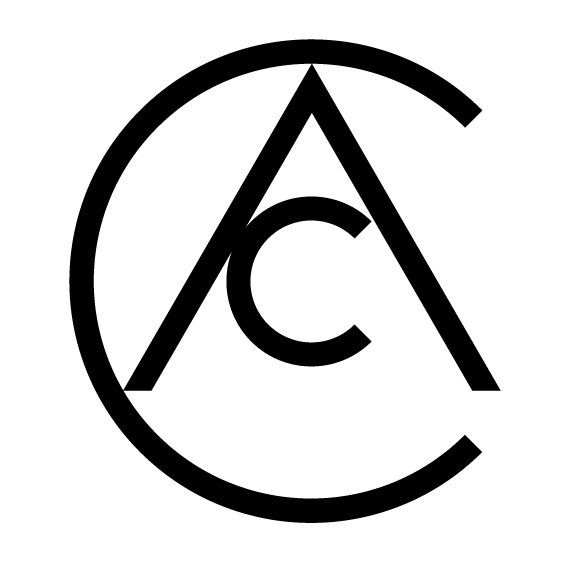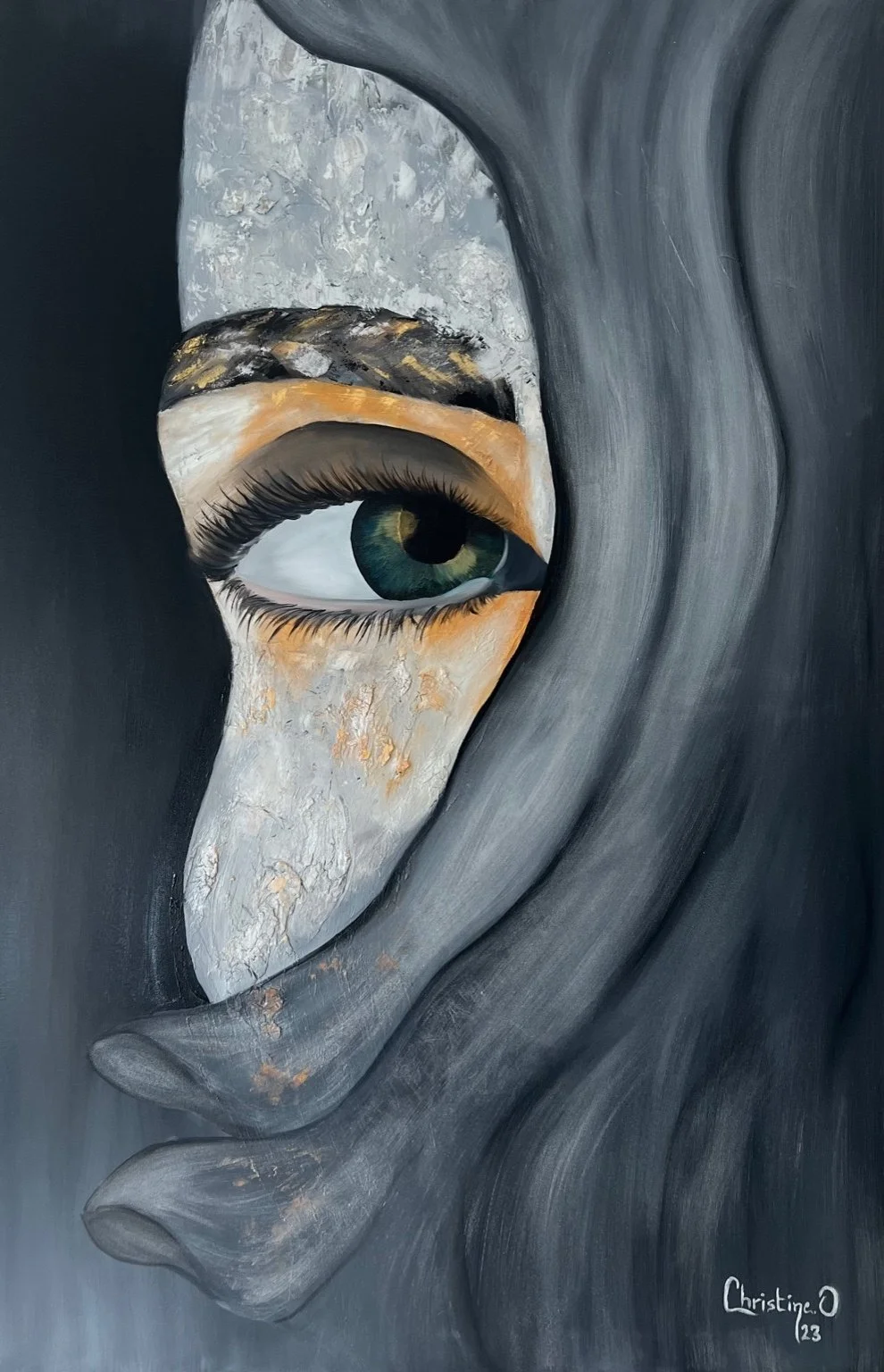Interview with Pedro Sousa Louro
Your art often blends Cubism and abstract expressionism with architectural influences. How do you navigate the tension between the structured geometry of architecture and the emotional fluidity of abstract expressionism in your compositions?
The mix of between geometry and architectural forms with abstract expressionism happened accidentally. But also by making the accident with an understanding meaning visually and emotionally abstract. I wanted the three things together and obviously didn't want to exclude anything related to them from my final statement, so it's sightly of craziness. I have to agree, but it is what I like to do. To challenge myself constantly.
With enormous practice, attempts, invented techniques, and analyses, I eventually understood what I should use or not use. I had to know that the three art expressions should not be mixed with exaggerated elements and statements but only with simple emotional detail and crucial colourful fluidity to reach a point of abstract expression. I did, at least in my head.
As someone born in Angola, with aristocratic Portuguese roots, and now based in London, how do your diverse cultural and geographical experiences influence the themes and materials in your work?
I'm a fortunate person in life in general. I'm lucky with all the opportunities my family gave me in front of my youth and young man's age. I was educated in and with very traditional and serious educational and religious methods. I studied in a historically old, prestigious, Religious Portuguese private college with very rigid internal laws and a traditional daily routine in the north of Portugal's ancient city called Braga, where my grandparents' families came from. My grandmother was from an aristocratic family. A family with a tremendous impact on the positive environment living in Braga with the local communities and the local churches. But also, at home, I had a daily routine that I had to follow precisely with no complaints. That gave me a vast sense of awareness, self-thinking, and self-act, which was to prepare me to engage with society someday on my own. That's the way it was. At the weekends and school holidays, I either go to my parent's house in the cost of Lisbon in Estoril Cascais, or I also go to the family mountain house or agriculture field house from the family. All those visions of nature, ocean, industrial, textures, smells, aromas and colours had a significantly more profound impact on the creativity that I use now. It is inevitable if it wasn't!
You have emphasized the importance of public domain needs and environmental living in architecture. How do these principles manifest in your artistic practice, particularly in your use of reclaimed and oxidized materials?
I should have been an architect. But instead, I went for plastic arts.
I have considerable knowledge and private life connections, as well as private collectors, about architecture on a large and high scale, which made my vision and understanding more knowledgeable about architecture and public domain needs. It is from these elements of my life that came to my obsession with incorporating systematic objects, wood, textiles, plastics, and almost anything else I see as potential and beauty for improving the final vision of beauty that I see in my compositions. If I don't see beauty, I won't create them that I know for sure. Oxidising copper powders is a technique I have developed over recent years to match and give another level of communication for the rest of the chosen materials I use. It's all basically about life, our life.
Your pieces are described as having an archival, collage-like approach, unearthing layers of history. How do you select the materials and objects you incorporate into your works, and what narratives do they carry?
As I mentioned before, the objects I use have potential in beauty, shape, and design, as well as in how easily they can be fixed and safely incorporated into the artwork.
In the narrative, I try to create a story or the beginning of a story where I start declaring a fact or moment in time, present or past. But recently, I began to leave more vision space for the viewers and buyers to make their own imaginative adjustments and even finalize themselves "visually" as the storytellers of the compositions. This means I do not give too much information and details about the piece. I let them imagine what they see and feel by observing the piece, which makes the piece sell faster, and I like that! We live and learn what we take from life.
Andrea Branzi, a prominent figure in architecture and design, has profoundly influenced your work. How have his teachings shaped your artistic philosophy, and can you share a specific instance where his ideas guided a particular piece?
I Emerge Inside the Branzi Family by Andreas' oldest daughter, Ursula Branzi, La Pina from Radio VJ. Pina is a radiophonic voice and a TV presenter in Italy. She's one of my best friends. We met while working as TV presenters on an Italian TV channel. I was a model, and I was cast for a TV channel that was about to be launched. We connected straightway, and we have become close friends forever. At that time, I lived in a model apartment from the model agency I was working with. It was a challenge for me. We almost had to sleep with our groceries and toothpaste inside the bed because models use and eat everything that doesn't belong to them. I was tired and struggling to live in that environment, and every day, I had to be at the studio to record with a smile on my face.
One day, Pina gave her car keys and said, "Pedrino, go pick up your bags and come and stay with us." I lived close to the Branzi family for almost four years and became friends until today.
Before I met Andrea, I thought my creative brain and ideas for creating art were not typical and not very understandable to others.
After I met Andrea and became close to his works and himself in person, my artistic nerve system and ideological art creation became one single form, and I have no fear of making what I like and imagine. Seriously, I thought I was crazy for envisioning and creating the art that I do.
I like all of Andreas' works, but my favourite piece is a drawing of an architectural prospect of a new development city around the capitals for the future population that needs to be rehoused and incorporated into a community done when Andrea was only 27 years old. That drawing has been exhibited in solo exhibitions with the Guggenheim in New York, The Pompidou in Paris, the Metropolitan Museum of Art in New York and the Fondation Cartier pour l'Art Contemporain in Paris.
I can't say or disclose more about Andrea Branzi with all respect to my friends.
For me, Andrea Branzi was and still is one of the masters of new modern architectural thinking and the expression of contemporary modern art.
I remember hearing Andrea talk about modern art one day, and this phrase changed me forever.
" In arte tu fa quello chi voy e spinge quello chi ti piaci e fare cosi e fare arte ."
You have spoken about using yacht varnish to seal your artworks, a distinctive choice. How does this material reflect your artistic vision, and do you see it as a metaphor for the permanence or fragility of the narratives you create?
Yes, absolutely. It protects me from any objects I incorporate in my work and keeps them from falling out of my canvas or wood panels. It became an addiction, and at the moment, I don't know what I should do to change the type of varnishing. But also, I like the way it dries, and in some, if not all, of the works I have done, it looks an old archival and deteriorated look, and I like it so much. Let's see if I come to a solution in the future or if I care about using the same varnish. Who knows!
Your works have been described as a dialogue with the evolution of color and geometry. How do you see your art contributing to the ongoing conversation within the Neoplasticism movement, and where do you diverge from its traditional principles?
The dialogue of the colours and the geometry I am designing is straightforward to explain. The colours I chose are the same kind of colours I chose for the clothes I'm going to wear. Most of everyone knows if this colour is better than that colour when it comes to putting them together. The geometry comes after and is the same thing. It comes as almost as an accessory. So it's all about taste. Personal taste. Traditional principles come with taste; neoplasticism is a constant element due to geometry. Neoplasticism wouldn't have happened without geometry. Without the geometry and design shapes, Mondrian wouldn't have been Mondrian in the history of modern art.
Your collaborations with the cinema industry, including upcoming projects with 20th Century Studios | Disney, bring your work into a new dimension. How do you approach the intersection of fine art and commercial storytelling in such contexts?
We artists are here to be used, engaged, and participate in all aspects of the modern living age.
I haven't seen the movie yet because it is only out in April, and I can't comment on the context at the moment. However, I will have my opinion once I watch the movie. I'm pleased with the experience and will do it again, not only for the economic side but also for the prestigious level.
As a celebrated LGBTQ artist, how do themes of identity and personal expression inform your artistic practice, and do you see your work as contributing to broader conversations about representation in the art world?
My work contributes to anything connected with contemporary modern art, including anyone inspired by my creativity. I'm an artist who has already been perfectly understood, and I want to reference my name and the art I create as a serious career and legacy. I'm not an artist because I have nothing better to do with my life. I'm an artist because I know precisely what I create and the impact that it could have on the public view and the art world. I know very well what I'm doing with my life and my creativity. So, being told that I am the most talked about LGBT artist doesn't make me anything different from other artists. This was written by an art critic a few years ago. What else can I do now? Nothing.
Your artistic journey spans modeling, TV presenting, and a deep engagement with abstract vision. How do these seemingly disparate experiences converge in your current practice, and how have they shaped your understanding of creativity and artistic discipline?
I have been painting and creating abstract art since a very young age. The fact that I had two different careers in between is just a fact of life, destiny, and economic outcomes. I started to paint professionally straightaway again when I realised that beauty wasn't making money anymore. The fact that I spent two decades creating less art didn't change my way of thinking and creating art. The abstract vision is an element I was born with and will stay until I die. That is my life, a vision of abstraction!


















